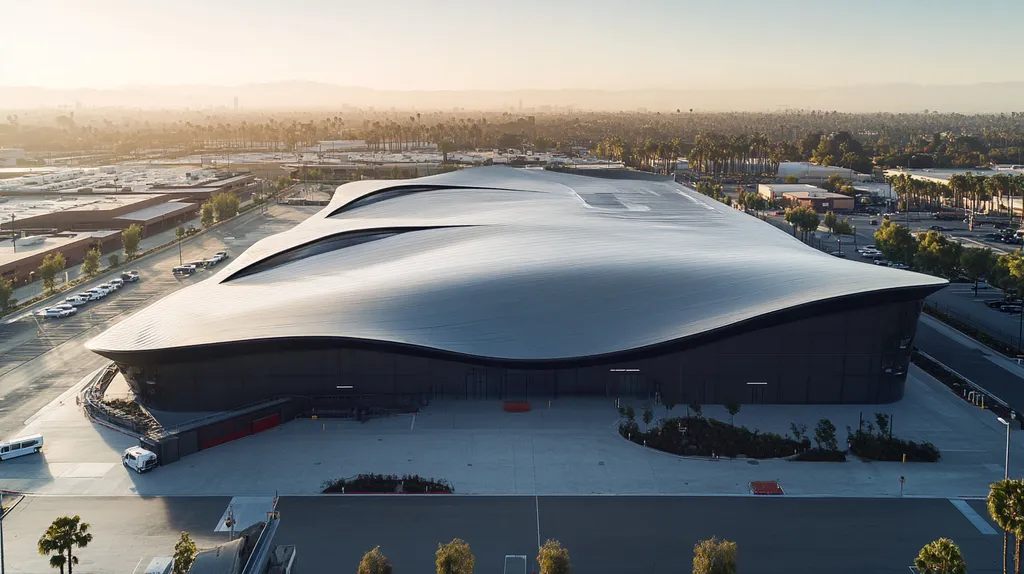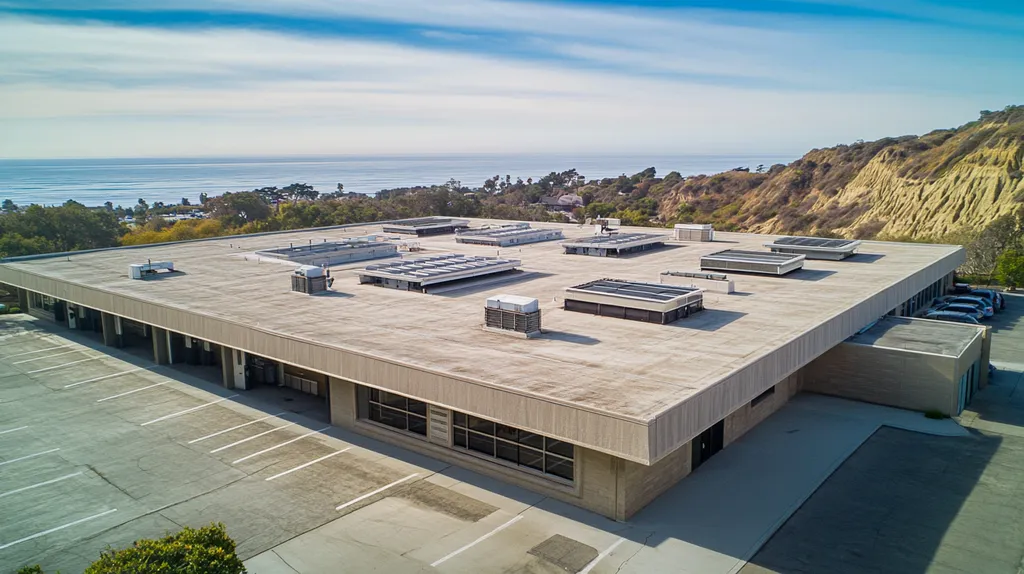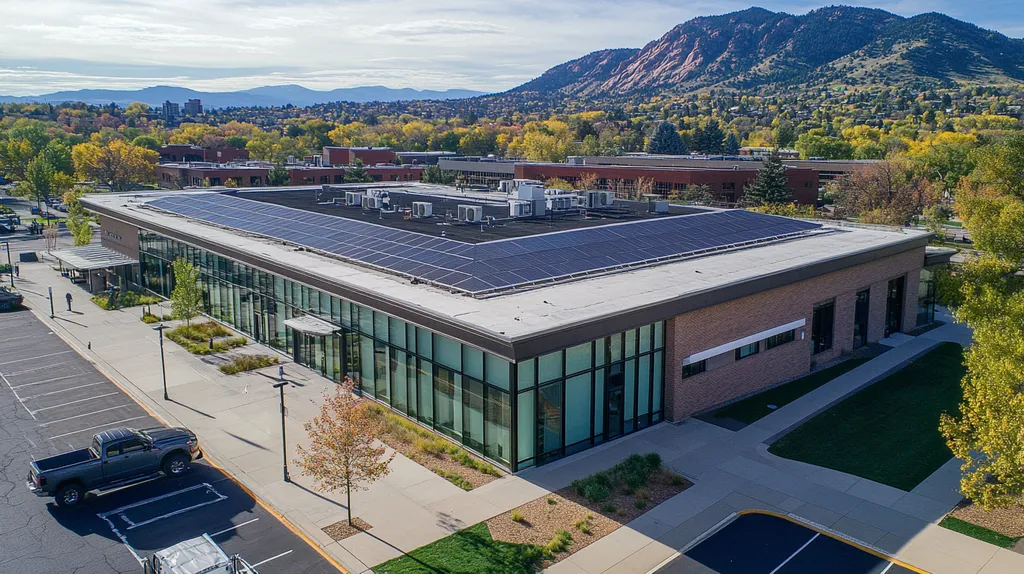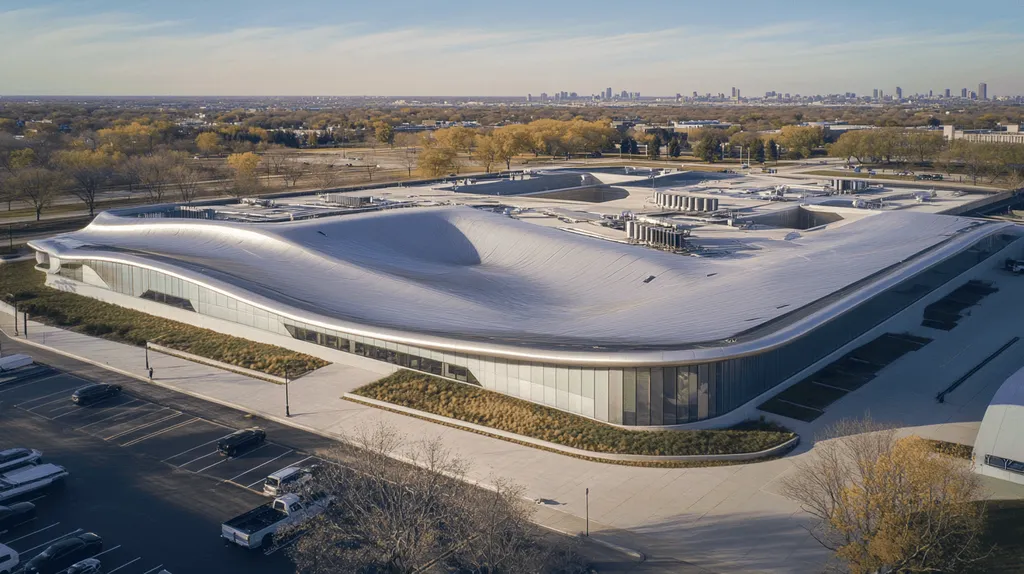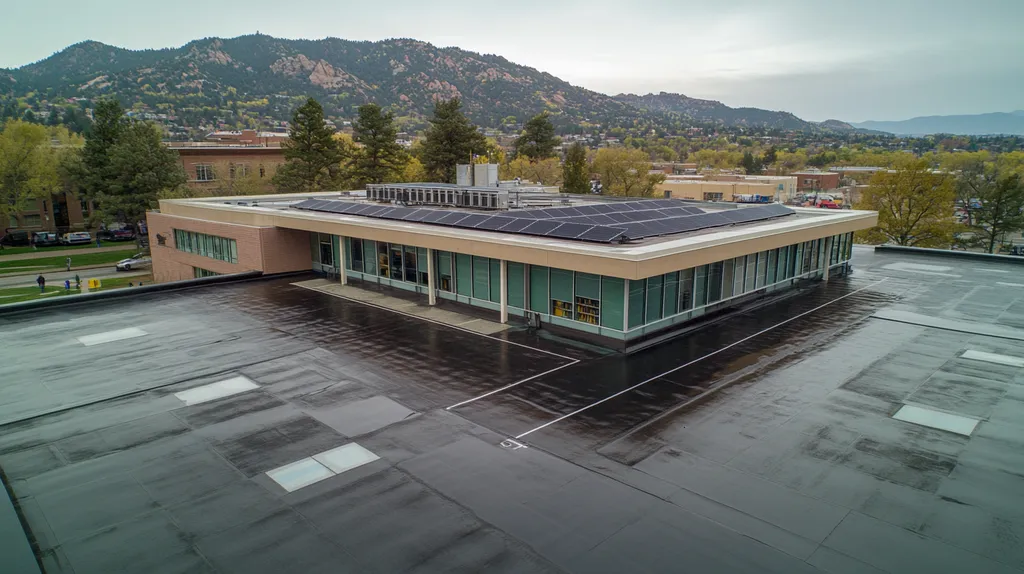In today’s industrial facilities, inadequate roof lighting maintenance costs businesses over $3.6 billion annually in accidents, lost productivity, and wasted energy. Studies show that optimizing commercial roof lighting systems can reduce energy costs by up to 75% while improving worker safety by 40%.
For facility managers, mastering lighting maintenance has become mission-critical as aging infrastructure meets rising energy costs and stricter safety regulations.
This comprehensive guide explores the key factors of lighting maintenance – from performance metrics and financial considerations to compliance requirements and risk management strategies – providing actionable solutions for property owners and facilities teams.
SECTION 1: PERFORMANCE FACTORS
Lighting maintenance is a key player in driving operational efficiency within industrial and commercial roofs. Subpar lighting can drive energy costs up and hinder employee productivity. In fact, the U.S. Department of Energy reports that transitioning to efficient lighting can slash energy consumption by as much as 75%. This section delves into the advantages of natural light compared to artificial sources, the energy efficiency of daylighting solutions, and the profound effect proper lighting has on workspace productivity.
Natural Light vs. Artificial Lighting
The interplay of natural and artificial light greatly influences operational expenses and employee satisfaction. Utilizing natural light not only enhances energy efficiency but also diminishes the reliance on artificial lighting during daylight hours. Research from the Lighting Research Center indicates that spaces enriched with natural light can slash energy consumption by 20% or more.
On the flip side, excessive dependence on artificial lighting can lead to soaring energy costs. Facility managers are tasked with balancing these two types of lighting to achieve optimum light levels. While both options have distinct uses, maximizing natural light contributes to cost savings and elevates the overall aesthetics of the workspace.
Installing skylights or light tubes is a practical way to channel daylight into interior environments. However, it’s important to consider challenges such as unwanted heat gain or glare, which can detract from comfort. A well-planned strategy is essential for harmonizing both lighting needs effectively.
Key Action Items
Energy Efficiency of Skylights and Daylighting
Utilizing daylighting techniques, such as skylights and strategically placed windows, can greatly enhance energy efficiency. These solutions harness sunlight to brighten workspaces, thereby reducing reliance on electric lighting. According to studies, energy-efficient skylights can yield annual energy savings of 25-60%, depending on building design and local climate conditions.
When selecting daylighting solutions, choosing products specifically designed for energy efficiency is vital. Options like high-performance glass and sophisticated control systems can amplify these benefits. Facility managers should thoroughly assess the thermal performance of skylights to ensure they maintain insulation without boosting heating requirements.
Monitoring natural light levels throughout the day is crucial for optimizing energy usage. Many advanced systems can automatically adjust artificial lighting according to the amount of daylight present. This proactive strategy not only conserves energy but also enriches the overall atmosphere of the workspace.
Key Action Items
Impact on Workspace Productivity
The quality of lighting in any workspace directly influences employee productivity and morale. Studies have shown that well-lit environments, especially those benefiting from natural light, can enhance productivity by up to 15%. Adequate lighting not only reduces eye strain and fatigue but also minimizes errors, contributing to a more efficient work environment.
Moreover, the psychological advantages of natural light are significant. Regular exposure to daylight can elevate mood, sharpen focus, and enhance overall well-being among employees. In stark contrast, poorly lit spaces may lead to reduced motivation and heightened turnover rates.
Facility managers should prioritize optimizing lighting conditions within their maintenance strategies. Continuous assessment and timely adjustments can ensure peak performance. Areas like break rooms and collaborative zones should particularly emphasize natural light to create welcoming atmospheres.
Key Action Items
SECTION 2: FINANCIAL CONSIDERATIONS
Lighting maintenance on industrial and commercial roofs serves as a critical aspect that impacts the financial performance of a facility. In an era where energy costs are volatile, optimizing lighting choices can lead to substantial savings. Research indicates that energy-efficient lighting solutions can reduce electricity consumption by more than 50%. A deep understanding of these financial implications can pave the way for informed decisions and bolster a company’s financial well-being.
Cost Savings Through Reduced Energy Consumption
Investing in energy-efficient lighting solutions can significantly lower operating costs. For example, switching to LED lighting, renowned for its minimal energy consumption and long lifespan, can lead to savings of up to 75% on energy bills. This transition not only cuts costs but also requires less frequent maintenance, translating to lower labor and equipment expenses.
Furthermore, well-maintained LED systems can last longer, compounding the savings across their lifespan. By implementing smart lighting controls, facilities can respond dynamically to occupancy levels, further optimizing energy usage. Such strategies are not just practical; they represent a savvy financial decision.
Key Action Items
Initial Installation and Maintenance Costs
Although the initial costs associated with modern lighting systems can be higher, their long-term benefits often outweigh these expenditures. For instance, while the upfront investment for a leading-edge LED system may exceed that of traditional options, the gradual accumulation of savings from reduced energy bills and lower maintenance costs showcases their value over time.
Additionally, it’s crucial to account for the hidden costs tied to outdated systems, such as frequent failures and the resulting downtime. These interruptions can incur substantial productivity losses that directly impact profits. Utility companies may also offer rebates for upgrades, making the transition to energy-efficient systems more feasible.
Key Action Items
Long-Term Return on Investment
Understanding the long-term return on investment (ROI) for lighting maintenance is paramount for facility managers. Buildings that invest in energy-efficient lighting often experience lower operational expenditures and increased property values. Research indicates that properties with advanced lighting installations can sell for 10-15% more than less efficient buildings.
A well-illuminated workspace enhances safety and reduces accidents, which can have significant financial implications. Furthermore, maintaining an environmentally friendly facility can bolster a company’s public image, attracting new clients or tenants and promoting financial growth.
In conclusion, analyzing the long-term ROI of upgraded lighting systems reveals substantial benefits that can significantly influence overall financial strategies for facility managers.
Key Action Items
SECTION 3: COMPLIANCE REQUIREMENTS
Ensuring proper lighting maintenance on roofs is not merely a recommendation; it is a vital necessity driven by regulatory requirements. When property owners fail to meet these standards, they jeopardize their operations, facing steep fines and potential liability claims. For example, according to the Occupational Safety and Health Administration (OSHA), deficient lighting can significantly raise the risk of workplace injuries, leading to costly consequences for businesses. Thus, comprehending these compliance requirements is essential for fostering a safe and efficient environment.
Regulatory Standards for Industrial Lighting
Regulatory standards governing industrial lighting are set forth by several authorities, including OSHA and the National Fire Protection Association (NFPA). These standards establish minimum illumination levels crucial for maintaining safety and enhancing productivity. For instance, OSHA requires a minimum of 5 foot-candles in general work areas—an illumination level often overlooked in older facilities.
For facility managers, compliance is not a matter of choice. Regular inspections must be conducted to verify that lighting systems are sufficient and up to code. This process may involve upgrading fixtures or increasing bulb wattage to improve visibility. Regular audits are instrumental in pinpointing areas needing attention to maintain compliance.
Meeting these standards not only prevents fines but also fosters a safer workplace, where companies typically witness fewer accidents and greater productivity. Establishing a steady maintenance schedule is therefore paramount for achieving long-term compliance.
Key Action Items
Safety and Environmental Compliance
Beyond merely adhering to regulations, prioritizing safety and environmental compliance is critical for effective lighting maintenance. Facility managers must guarantee that lighting systems are both efficient and eco-friendly, opting for products that align with Environmental Protection Agency (EPA) standards.
Adopting technologies like LED lighting not only conserves energy but also mitigates the hazardous waste associated with traditional lighting sources. Proper disposal of old bulbs is essential in preventing ecological damage, aligning with the growing corporate emphasis on social responsibility.
Regular inspections of lighting systems allow for the identification of potential safety hazards, such as flickering lights or inadequate illumination in high-traffic areas, enabling timely interventions to avert workplace injuries and diminish liability.
Key Action Items
Building Code Adherence
Building codes add another critical layer of compliance for facility managers concerning lighting maintenance. These codes set the required illumination levels and electrical safety standards for both commercial and industrial buildings. Compliance is non-negotiable and can prevent significant legal and operational challenges.
When installing new lighting systems, facility managers must ensure adherence to local building codes, which may dictate specific requirements regarding fixture types and positioning. Regular maintenance checks help guarantee that existing systems stay compliant throughout their operational life.
Non-compliance with building codes can result in costly renovations or even operational shutdowns until standards are met. Therefore, routine training for maintenance personnel about these codes is essential to ensure consistent compliance and smooth operations.
Key Action Items
SECTION 4: RISK MANAGEMENT
Ensuring that lighting maintenance is a top priority directly impacts safety and operational efficiency on commercial and industrial roofs. Neglecting this vital aspect can lead to accidents, decreased productivity, and serious legal liabilities. A revealing study by the Occupational Safety and Health Administration (OSHA) shows that inadequate lighting contributes to over 20% of workplace accidents. For facility managers, effectively managing risks related to lighting is crucial to mitigate these hazards.
Preventing Accidents with Proper Lighting
Insufficient lighting can create dangerous conditions on rooftops. Areas with inadequate illumination can lead to slips, trips, and falls, responsible for a significant number of worker injuries. Conducting regular assessments can help pinpoint dark areas that need additional fixtures or bulbs.
Implementing high-quality LED lights enhances visibility and saves energy. Incorporating features like motion sensors keeps spaces adequately lit when needed. This approach not only safeguards workers but also promotes productivity.
Establishing routine inspections and maintenance schedules ensures that lighting systems operate correctly. Promptly replacing burnt-out bulbs dramatically increases safety and reduces risks. Prioritizing this aspect of roof maintenance empowers facility managers to foster a safer work environment.
Training workers to identify and report inadequate lighting can encourage proactive management. Creating clear procedures for reporting lighting issues helps maintain efficient lighting systems and prevents accidents before they occur.
Key Action Items
Managing Weather-Related Risks
Weather conditions can greatly influence the performance of lighting systems on rooftops. Severe rain or snow may impair outdoor lighting, increasing risks during bad weather. To mitigate these hazards, ensuring that fixtures are weather-resistant and securely installed is essential.
Conducting regular roof inspections helps detect obstructive debris or ice that could hinder lighting efficiency. Clearing these obstacles is key to maintaining optimal visibility and reducing risks associated with weather.
Using lighting fixtures rated for specific weather conditions significantly enhances safety. For example, lights designed for extreme temperatures guarantee reliable functionality, contributing to better safety and overall efficiency.
Creating a contingency plan to address potential lighting failures during severe weather is crucial. This plan should include backup power sources or alternative lighting solutions ready for deployment during storms.
Key Action Items
Mitigating Fire Hazards from Lighting
The risk of fire poses a significant concern when managing lighting systems. Overheating bulbs or faulty wiring can lead to fires, threatening the safety of the entire facility. Therefore, conducting regular inspections of lighting systems is essential to identify potential fire hazards before they escalate.
Utilizing LED lights can reduce fire risks due to their lower heat output compared to traditional bulbs. Transitioning to energy-efficient solutions not only enhances safety but also reduces energy costs.
Facility managers must ensure that all electrical connections are secure and properly maintained. Regularly inspecting wiring for signs of damage or wear helps prevent electrical shorts that could ignite fires.
Establishing a systematic maintenance schedule, including fire safety checks, can further reduce risk. Providing fire safety training for staff ensures that everyone understands protocols and emergency procedures related to lighting systems.
Key Action Items
SECTION 5: OPERATIONAL PROCEDURES
Ensuring effective lighting maintenance is paramount for the safety and productivity of commercial and industrial roofs. Failing to address lighting systems can escalate energy costs, introduce safety risks, and disrupt business operations. This section highlights essential operational procedures, including regular maintenance, timely repairs, and the benefits of upgrading to energy-efficient lighting.
Routine Maintenance for Lighting Systems
Establishing routine maintenance is crucial for extending the lifespan of roof lighting systems. Regular inspections can uncover issues such as burnt-out bulbs, faulty fixtures, or corroded wiring. Implementing a structured schedule for these checks facilitates the early identification of problems, helping to avoid costly emergency repairs.
During maintenance visits, facility managers should clean fixtures to remove dust, grime, and debris that essentially hinder light output. In industrial environments, the rapid accumulation of contaminants requires consistent cleaning to maintain optimal lighting efficiency. A clean lighting system enhances visibility and contributes to lower energy consumption.
Meticulous documentation of maintenance activities is essential for tracking system performance. Keeping a record helps in identifying patterns over time, making it easier to anticipate replacement needs and budget accordingly. This proactive approach provides valuable data for enhancing lighting strategies.
Additionally, utilizing trained personnel for these tasks ensures adherence to safety protocols. Proper handling and disposal of old lighting components also align with sustainability goals, emphasizing the importance of environmentally conscious practices.
Key Action Items
Scheduling and Performing Repairs
Clear scheduling of repairs is essential to minimize downtime and maintain safety. When lighting systems malfunction, the ensuing darkness can compromise safety and disrupt productivity in industrial settings. Quick response times can prevent accidents and uphold operational continuity.
Facility managers should promptly assess the nature of the lighting issue to determine the need for in-house repairs or professional assistance. Simple tasks, like bulb replacements, might be manageable internally, while addressing electrical faults may require expertise.
Effective communication among team members is vital to keep everyone updated on repair statuses. Implementing a work order system allows for tracking requests and prioritizing urgent repair needs, ensuring no significant issues are overlooked.
Maintaining a stock of essential spare parts, such as light bulbs and tools, streamlines the repair process and mitigates delays due to lack of components.
Key Action Items
Upgrading to Energy-Efficient Lighting
Transitioning to energy-efficient lighting represents a strategic move toward long-term savings and operational benefits. Older lighting technologies, like incandescent and fluorescent bulbs, are not only energy-intensive but also have shorter lifespans. Shifting to LED lighting can yield energy savings of up to 75% while extending replacement intervals significantly.
The advantages of energy-efficient lighting extend beyond reduced utility bills; they also diminish maintenance costs. LEDs’ durability means fewer replacements, freeing up resources for other facility needs. This transition ensures a streamlined approach to managing lighting systems.
Moreover, investing in energy-efficient lighting enhances overall sustainability within buildings. Numerous jurisdictions provide incentives for adopting environmentally friendly technologies, making these upgrades financially attractive. Being informed about available funding can enhance the feasibility of such initiatives.
Upgrading lighting systems also plays a key role in improving employee morale. High-quality lighting fosters better visibility and comfort, contributing positively to productivity and employee well-being. Ultimately, enhancing the work environment yields tangible benefits for overall business performance.
Key Action Items
SECTION 5: OPERATIONAL PROCEDURES
Effective lighting maintenance is critical for safeguarding safety and enhancing productivity on commercial and industrial roofs. Ignoring lighting systems can lead to inflated energy costs, increased safety risks, and significant disruptions to business operations. Establishing regular operational procedures is essential to tackle these challenges. This section discusses the importance of routine maintenance, the urgency of timely repairs, and the benefits of upgrading to energy-efficient lighting.
Routine Maintenance for Lighting Systems
Implementing routine maintenance is vital for prolonging the lifespan of roof lighting systems. Regular inspections help spot problems such as burnt-out bulbs, damaged fixtures, or corroded wiring before they escalate. A structured maintenance schedule ensures issues are addressed promptly, reducing the need for costly emergency repairs.
During maintenance visits, facility managers should thoroughly clean fixtures to eliminate dust, grime, and debris that impede light output. In commercial and industrial environments, pollutants accumulate rapidly, requiring consistent attention. A clean lighting system boosts visibility and optimizes energy efficiency.
Documenting all maintenance activities is critical for monitoring performance over time. This record helps identify recurring issues and allows for forecasting replacement needs, thereby aiding in budget planning. Proactive documentation provides essential data for refining overall lighting strategies.
Utilizing trained personnel for maintenance tasks ensures adherence to safety protocols. Proper handling and disposal of old lighting components further minimize environmental impact, aligning with sustainability goals.
Key Action Items
Scheduling and Performing Repairs
Establishing a clear repair schedule is essential to minimize downtime and maintain safety. If lighting systems fail, the resulting darkness can threaten safety and disrupt productivity on industrial roofs. Timely action helps to prevent accidents and preserve operational integrity.
Facility managers must quickly evaluate the nature of any lighting issues to determine if they can be resolved in-house or require outside expertise. For example, bulb replacements may be manageable internally, while electrical repairs likely necessitate qualified professionals.
Effective communication across teams is vital for keeping all members informed about repair statuses. Implementing a work order system aids in tracking requests, prioritizing urgent repairs, and ensuring no issue is overlooked.
Maintaining a stock of essential spare parts, such as bulbs and basic repair tools, shortens the repair process and helps avoid delays. This proactive approach ensures that repair needs can be met promptly.
Key Action Items
Upgrading to Energy-Efficient Lighting
Switching to energy-efficient lighting is a strategic measure that supports long-term savings and enhanced operational benefits. Traditional lighting technologies, such as incandescent and fluorescent bulbs, consume higher amounts of energy and have shorter lifespans. Transitioning to LED systems can yield savings of up to 75% on energy costs.
Beyond reducing utility bills, energy-efficient lighting minimizes maintenance costs. LEDs boast a significantly longer lifespan, resulting in fewer replacements and lower overall upkeep expenses. This transition allows facility managers to allocate resources more effectively.
Furthermore, these upgrades bolster building sustainability. Many areas offer incentives for adopting energy-efficient technologies, making the financial burden of upgrades lighter. Being aware of available funding can facilitate the implementation of these advancements.
Additionally, improved lighting quality positively impacts employee morale. Enhanced visibility and comfort foster a better work environment, driving productivity and well-being. Elevating the workspace leads to tangible gains for overall business performance.
Key Action Items
Looking Ahead
As aging infrastructure meets rising energy costs, ineffective lighting maintenance threatens $3.6 billion in annual losses across commercial and industrial facilities.
The data is clear: optimized lighting systems reduce energy costs by up to 75% while improving worker safety by 40%.
From performance metrics and financial considerations to compliance requirements and risk management, facility managers must take a comprehensive approach to lighting maintenance.
The transition to advanced lighting technologies, coupled with strategic maintenance protocols, represents a critical investment in operational efficiency and workplace safety.
Those who fail to modernize their lighting systems face mounting costs, increased accident risks, and potential regulatory penalties in an increasingly efficiency-focused industry.
FREQUENTLY ASKED QUESTIONS
Q. How does lighting maintenance affect commercial roof performance?
A. Consistent lighting maintenance directly influences energy costs and employee productivity. Well-maintained systems enhance workspace efficiency, while neglect can lead to increased expenses and diminished morale, ultimately affecting operational effectiveness.
Q. What financial benefits come from upgrading industrial roof lighting?
A. Upgrading to energy-efficient lighting can significantly cut energy expenses. Systems like LEDs reduce electricity consumption, resulting in notable savings over time, while also lowering maintenance costs due to their longevity.
Q. What compliance requirements must facilities meet for lighting?
A. Facilities must adhere to lighting regulations set by OSHA, ensuring adequate illumination levels. Regular inspections and upgrades may be necessary to meet safety standards and avoid fines, promoting a secure working environment.
Q. How can proper lighting reduce safety risks on commercial roofs?
A. Adequate lighting minimizes hazards by improving visibility and reducing accidents. Regular assessments and timely bulb replacements can prevent injuries associated with slips and falls, creating a safer work environment.
Q. What operational procedures ensure effective roof lighting maintenance?
A. Establishing routine inspections and maintenance schedules helps identify issues early. Proper documentation of all activities supports tracking performance and budget planning, ensuring the efficient operation of lighting systems.
Q. How do energy-efficient upgrades influence employee productivity?
A. Enhanced lighting quality through energy-efficient upgrades boosts visibility and comfort, directly impacting employee morale. Better working conditions promote focus and productivity, leading to overall improved performance and job satisfaction.
Q. What are the best practices for disposing of old lighting materials?
A. Proper disposal of old lighting materials is crucial for environmental compliance. Always follow local regulations for hazardous waste, and consider recycling options to minimize ecological impact while ensuring safe disposal.


